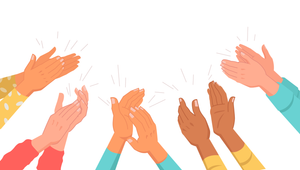This article is adapted from an original post in UX Collective on Sep 22, 2020.
Many companies face the challenge of retaining talented designers. Talented designers have opportunities as the top of the talent funnel at this level is usually more in demand because they bring a blend of creativity, technical skill, and strategic thinking that can significantly impact a company’s success.
While perks and benefits can help attract designers, they are not sustainable long-term retention methods. To keep designers engaged and committed, companies and managers must prioritize growth opportunities and provide avenues for personal and professional development.
Enabling growth beyond management
One common misconception is that a designer’s only path to growth is transitioning into a managerial role. However, not all designers aspire to be managers; many prefer to focus on their craft and continue as individual contributors. Companies should recognize and appreciate this aspect and create ways to enable growth for designers on small teams or in non-managerial positions. Companies need to find effective ways to support the growth of individual contributors, as this is one of the most significant challenges in retaining talented designers.
Integrating learning opportunities into daily work
Designers crave novelty, new experiences, challenges, and opportunities for personal growth. Companies that can provide these elements and help employees evolve and improve their skills have a better chance of retaining talented individuals for the long haul.
Designers and their managers can look for ways to integrating learning opportunities into the day-t0-day. For example, a designer might identify problem-solving or visual design as areas they’d like to focus on and seek out projects or opportunities that allow them to apply and refine these skills in real-world scenarios. Or, they might identify UX research as an area they’d like to develop further and collaborate closely with the research team on usability studies, user interviews, or data analysis to deepen their understanding of user needs and behavior.
Overcoming challenges in start-ups
Start-ups often face unique challenges when providing growth opportunities for designers. With a primary focus on achieving profitability and stability, these companies may struggle to allocate time and resources to employee development.
However, neglecting growth opportunities can lead to high turnover rates and difficulty retaining top talent. Start-ups need to find creative ways to support employee growth despite these constraints, such as through mentorship programs, skill-sharing initiatives, or allowing designers to take on stretch projects.
The power of mentorship and feedback
Mentorship and feedback play crucial roles in a designer’s growth and development. Even experienced designers benefit from having a sounding board and receiving constructive input on their work and approach to moving up.
Companies can facilitate effective mentorship relationships by pairing experienced designers with less experienced ones through formal mentoring programs. These programs should establish clear guidelines around meeting cadence, discussion topics, goal-setting, and progress tracking. Companies can also encourage organic mentorship by creating space for designers to collaborate, share knowledge, and learn from one another through workshops, lunch and learns, or design critiques.
Regardless of experience level or tenure, all designers benefit from feedback. Companies should encourage and facilitate mentorship relationships within the design team, across departments, or outside the company.
Creating personalized growth paths
Companies need to take a personalized approach to truly support designers’ growth. This process involves helping employees identify their desired growth direction, the new skills they want to acquire, and how their role can evolve to accommodate these aspirations.
To make this a successful endeavor, the company or manager might need to adapt the designer’s existing role or create new opportunities within the current position. Managers can create tailored growth plans that keep designers engaged and motivated by working closely with designers to understand their individual goals and aspirations.
Investing in the growth and development of designers is not just a nice-to-have; it’s a strategic necessity for companies that want to attract and retain top talent. By providing opportunities for learning, mentorship, and personalized growth paths, companies can create an environment where designers thrive and continue to bring their best work to the table.





